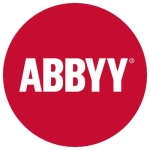What is our primary use case?
My domain and expertise are in life sciences. In life sciences there is a process called pharmacovigilance, which involves monitoring the effects of medical drugs after they have been licensed for use. I create end-to-end automations, for case processing and full data entry. The customer will store details in an Oracle-based pharmacovigilance platform called Argus, where clinical data from the client and the product are stored. The UiPath bot has to capture the cases from Argus. Once a case has been input into UiPath, a mandatory status check, duplicate search, and case processing have to be done.
It then needs to perform full data entry in Argus. The full data entry consists of more details like patient information, product information, event information, and so on. The bot needs to validate and input those details into Argus and save the case.
Some days there will be 1k records and on other days, there will be 2k records. On average the bot will process 12k to 13k records.
How has it helped my organization?
Pharmacovigilance is a big process. It would take almost 45 minutes for a human to complete a single case. By implementing UiPath robots in the customer's environment, the case processing time has been drastically reduced. The bot processes cases, end-to-end, within 20 to 25 minutes, depending on the case complexity, so that the customer is saving 20 minutes per case. The savings are equivalent to nine or 10 FTEs, which is huge. As a result of those savings, they have requested us to build more bots for them, for other processes.
What is most valuable?
The most valuable feature in UiPath is the UI interaction with UI Explorer. I have worked with other automation tools and UI Explorer is the standout feature of UiPath. For web-based applications, we can interact with every HTML element, from head to tail. UI Explorer is a valuable addition to UiPath for creating complex, web-based automation.
The AI Computer Vision and Orchestrator are also outstanding features. They make it very easy for developers.
In addition, the introduction of drag-and-drop APIs to UiPath enhances the development processes and decreases the time it takes, as well as the processing time. For example, if you wanted to read an email from Microsoft Outlook using UiPath two years ago, it would take about five steps or activities. Now, with the Graph API within UiPath, you can read an email message from Outlook within a span of five to six seconds, maximum. This API functionality is pretty easy for us to handle.
Along with this, UiPath also introduced Orchestrator access via API. It's not mandatory to log in to Orchestrator to create an asset manually in UiPath. Rather, you can use the Orchestrator API to call a bot process and the assets. This API functionality helps developers to develop components effectively, as well as reduces bot processing time drastically.
For how long have I used the solution?
I have been into RPA for almost six years and I have worked in the three major tools: UiPath, Automation Anywhere, and Blue Prism. I have been using UiPath for four to five years. I'm an RPA developer and do development for my clients. That includes designing and deploying bots in the clients' environments, and making sure the bots are running well.
What do I think about the stability of the solution?
It is stable. We are using the 2019 version. The versions are continually upgraded with the latest being the 2021 version. There are frequent updates but the version we are using is stable. We don't have any errors or bot crashes or other unexpected system exceptions during development. The stability is good across all versions.
What do I think about the scalability of the solution?
It's pretty scalable. It can be used across all major providers. If you want to automate Windows, web-based or PDF-based interactions, or do email or Excel automation, you can. We can also do terminal automation, mainframe automation, and Citrix automation. It covers almost every possible scenario for real-time data handling.
We only have a couple of challenges, when a customer says we need to do this or that and UiPath doesn't have built-in functionality for that. We need to think differently and add some additional .NET components, for example.
But UiPath is pretty scalable, and we can use it across all technologies for automation.
How are customer service and support?
If you don't find a solution in the Community Forum, you can raise a technical support ticket with UiPath. The support team works 24 hours a day, and we can get a resolution immediately. Both the Community Forum and the technical support play a major role and both help developers.
UiPath also has partners. Cognizant is a high-priority partner and they have their own SLAs for everything. If I raise a ticket regarding UiPath, if something is not working, the response time is very quick and the resolutions they provide are pretty standard. We haven't faced any difficulties in raising a ticket. Everything has met our expectations with respect to the technical support.
How would you rate customer service and support?
What's my experience with pricing, setup cost, and licensing?
The main thing that could be improved is the cost. I have worked with other tools and the licensing cost of UiPath is slightly higher than the others.
Also, UiPath has a built-in functionality called Computer Vision to extract values from a PDF. If we want to use Computer Vision, UiPath has one drawback. The cost is based on how many documents we are using Computer Vision on. That makes it difficult to estimate ROI. Computer Vision has a dynamic cost. To propose a project to a client, a project that includes Computer Vision, we need to have some kind of standard cost so that they can calculate the ROI effectively. Computer Vision should not be based on usage.
This is one of the main drawbacks that I have seen in real-life situations, when quoting a price for a client. If UiPath improved in this area, they might have many more customers who want to automate PDF interactions based on Computer Vision, because it has huge scope.
Which other solutions did I evaluate?
The advantage of using UiPath over Automation Anywhere is the UI interaction. Automation Anywhere doesn't have a specialized feature like UI Explorer, or any other options to click on an image or interact with UI elements. Automation Anywhere has a Capture command and we have to work with that one command to interact with all the UI-based elements. But it's completely different in UiPath. UI Explorer enables multiple clicks and interactive activities. You can mimic the HTML per your project's needs. You can't work in the same way in Automation Anywhere. With respect to web-based automation, UiPath stands tall. AA has limited functionality.
The disadvantage of UiPath is in the PDF interaction. Automation Anywhere has a bot called IQ Bot, which is included in the licensing of Automation Anywhere. It's pretty easy to train it for a PDF document within the span of a few seconds. UiPath's Computer Vision has the same functionality as IQ Bot, but Computer Vision is pretty costly.
Other than that, Automation Anywhere is cloud-hosted and it has multiple ways for a developer to code. If you want to code RPA, or you want to code in a flow-based manner, you can do so with Automation Anywhere. But UiPath has only one mode, a flow-based automation. UiPath doesn't have code-based automation.
From the developer's point of view, if you have a code-based structure then what AA offers is as good as UiPath.
A major advantage of UiPath is that since it is a .NET-based application, you can use all the methods and the properties that are available in .NET. You don't have that functionality in Automation Anywhere. If you want to read or manipulate a string, you need to use separate activities in Automation Anywhere, but with UiPath you can use the built-in .NET methods to read a string in a single line. The complexity of the code is smaller in UiPath.
What other advice do I have?
Because I have worked in all the major RPA tools, I can say confidently that UiPath is very developer-friendly. If you are coming from a non-technical background, or you don't know coding, they have a separate portal for you to develop in, called StudioX. It's a low-code platform, a "citizen-developer" platform. Anyone who wants to use UiPath can use it without any background.
From the development, design, and testing points of view, I rate UiPath higher than other RPA tools for automation. Go directly to UiPath, rather than trying all the other tools. UiPath is number-one for development and testing.
It is mandatory in our company to use the UiPath Academy to do RPA certification. Almost everyone has completed advanced professional certification in UiPath. The Academy covers every topic extensively, as far as what developers need. I don't come from an IT background but I learned it. UiPath teaches everything from scratch. With a little bit of coding knowledge, it's very easy to learn development using the Academy portal. The major advantage is that, since it is a video-based series, you get a clear idea of the modern-day functionality. They explain everything with an example and they give you use cases for practice.
If you want to be an architect, they have a course for that. If you want a developer diploma, they have a course for that. And if you want to learn a specific topic, like deployment or testing, they have courses for them.
For anyone with experience in another technology who wants to learn UiPath, or wants to do RPA projects, it's a matter of 10 to 15 days to go through all the videos and you can start working. That's a big advantage of UiPath. The Academy makes learning easy.
They also have a Community Forum. If we have any doubt, we can interact with other developers around the globe. It's very interactive and we can learn what things are intended to do. About 90 percent of the time, you can find a solution using the forum.
Other than the Computer Vision cost model, the features of UiPath are pretty awesome to use. As a developer, there aren't any drawbacks or difficulties when using UiPath.
Which deployment model are you using for this solution?
On-premises
Disclosure: PeerSpot contacted the reviewer to collect the review and to validate authenticity. The reviewer was referred by the vendor, but the review is not subject to editing or approval by the vendor. The reviewer's company has a business relationship with this vendor other than being a customer: Partner






















